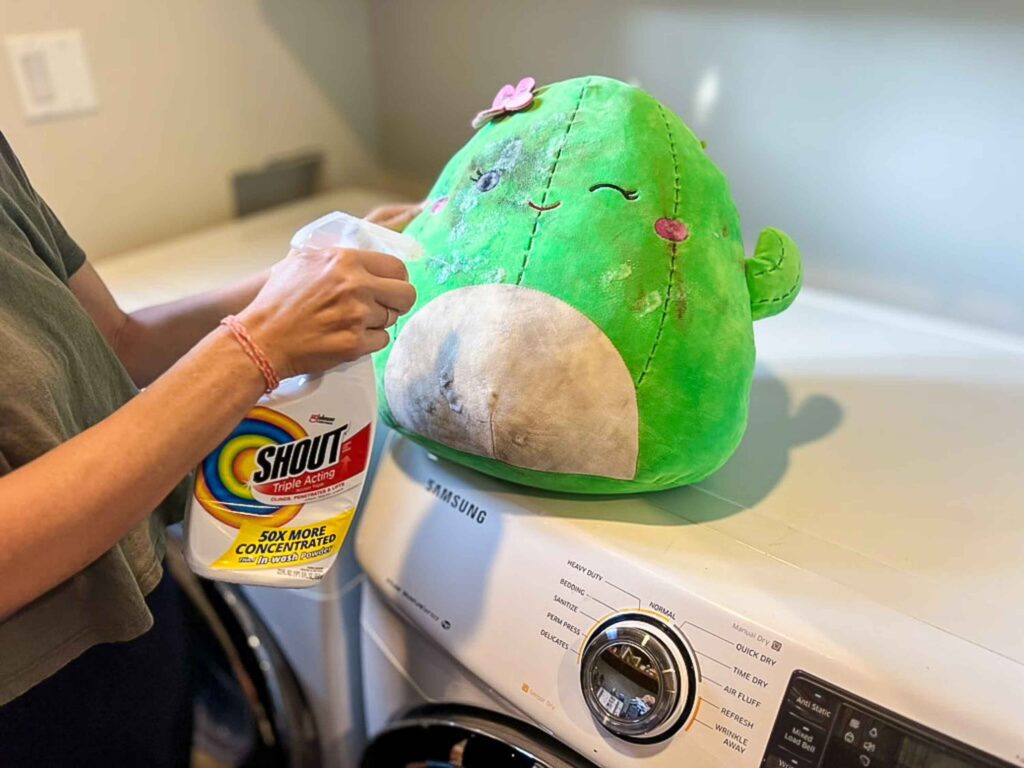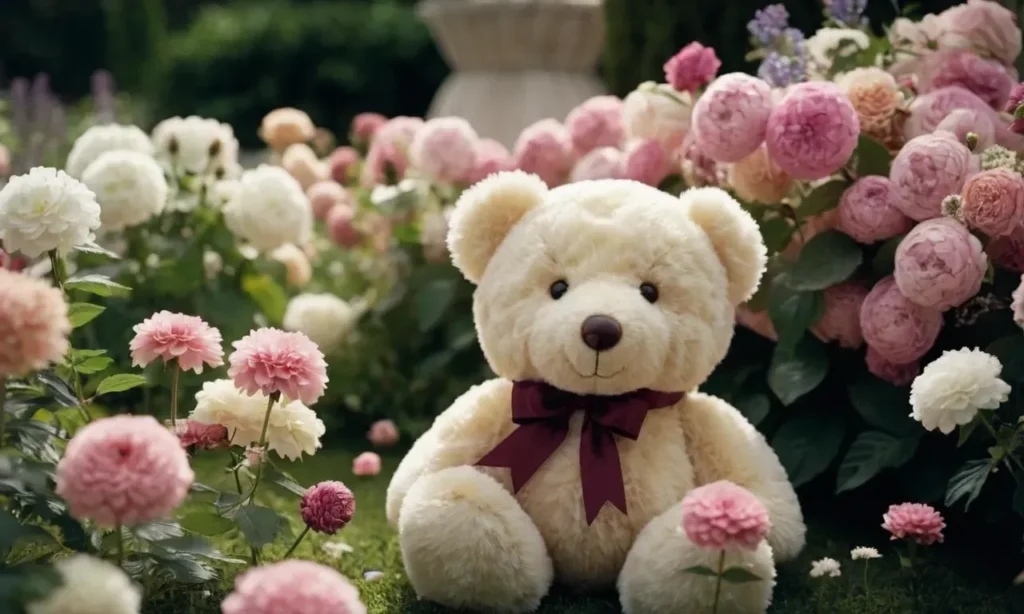Stuffed animals are more than just toys—they’re childhood companions, comfort objects, and sometimes even family heirlooms. But over time, these beloved plush friends can develop unpleasant odors that make hugging them less enjoyable. Whether it’s from spilled snacks, sweat, or just everyday dust, getting rid of that smell can feel like a daunting task. So, how do you get the smell out of stuffed animals effectively without damaging them? The key lies in understanding what causes these odors and applying safe, practical cleaning methods tailored to each plush toy’s material and condition.
In this article, we’ll unpack the causes of smells in stuffed animals, explore various cleaning techniques both professional and DIY, and provide tips to prevent odors from coming back. Imagine rediscovering the fresh scent of your child’s favorite plush toy—ready to snuggle again without the faint whiff of old gym socks! Let’s dive in and bring those cuddly pals back to life.
1.What Causes Unpleasant Smells in Stuffed Animals?

Odors in stuffed animals mainly come from accumulated dirt, sweat, oils, food particles, and bacteria trapped in their fabric and stuffing. Over time, moisture and environmental factors can worsen these smells.
- Body Oils and Sweat: Kids and adults naturally transfer oils and sweat to plush surfaces during hugs and play. These organic substances create the perfect environment for bacteria to grow, causing musty or sour smells.
- Food and Drink Spills: Snacks and beverages often find their way onto stuffed animals, leaving behind sugars and residues that attract mold and mildew if not cleaned quickly.
- Environmental Dust and Mold: Exposure to humid or dusty environments can introduce mold spores and dust mites, further intensifying unpleasant odors.
- Material Sensitivity: Some synthetic fabrics used in plush toys trap smells more stubbornly than others, requiring specific cleaning approaches.
- Aging and Wear: Older stuffed animals with worn fabrics and degraded stuffing tend to hold onto smells longer, making them harder to freshen.
| Cause of Odor | Descrição |
|---|---|
| Body Oils and Sweat | Oils and sweat from hugs and play create an environment for bacteria, causing musty smells. |
| Food and Drink Spills | Sugars and residues from spills attract mold and mildew if not cleaned promptly. |
| Environmental Dust and Mold | Humid or dusty surroundings introduce mold spores and dust mites, intensifying odors. |
| Material Sensitivity | Some synthetic fabrics trap smells more stubbornly, needing specific cleaning methods. |
| Aging and Wear | Older toys with worn fabric and stuffing hold onto smells longer, making them harder to freshen. |
2.How Can You Safely Clean Stuffed Animals Without Damaging Them?

The safest cleaning methods depend on the toy’s material, construction, and manufacturer instructions. Spot cleaning, hand washing, and gentle machine cycles are often preferred.
- Surface Spot Cleaning: Using mild detergents or baby wipes for surface stains keeps delicate toys intact while removing localized odors.
- Hand Washing: Soaking in lukewarm water with gentle detergent works well for toys with delicate fabrics or internal electronics, ensuring no damage to stuffing or seams.
- Machine Washing: If permitted, use a gentle cycle with cold water and a mesh laundry bag to protect the toy. Avoid high spin speeds to prevent deformation.
- Dry Cleaning Options: Some vintage or sensitive toys may require professional dry cleaning to avoid water damage.
- Air Drying: Always air dry stuffed animals thoroughly to prevent mold growth. Avoid direct heat sources that can shrink or deform materials.
| Método de limpeza | Descrição |
|---|---|
| Surface Spot Cleaning | Use mild detergents or baby wipes to clean surface stains without damaging delicate fabrics. |
| Lavagem das mãos | Soak in lukewarm water with gentle detergent; suitable for delicate fabrics or toys with electronics. |
| Lavagem à máquina | Use gentle cycle, cold water, and a mesh laundry bag; avoid high spin speeds to prevent deformation. |
| Dry Cleaning Options | Professional dry cleaning recommended for vintage or sensitive toys to avoid water damage. |
| Secagem ao ar | Air dry thoroughly to prevent mold; avoid direct heat sources that can shrink or deform materials. |
3.Which Home Remedies Are Effective for Removing Odors from Plush Toys?

Common household items like baking soda, vinegar, and activated charcoal effectively neutralize odors without harsh chemicals.
- Baking Soda: Sprinkling baking soda over the toy, letting it sit for hours, then shaking it out absorbs moisture and odors naturally.
- White Vinegar Spray: Diluted vinegar sprayed lightly and allowed to air dry can kill odor-causing bacteria. The vinegar smell dissipates quickly.
- Activated Charcoal: Placing the stuffed animal in a sealed bag with charcoal packets for a day or two absorbs persistent smells.
- Essential Oils: A few drops on a cloth near the toy can provide a fresh scent, but avoid applying directly to sensitive fabrics.
- Limitations: These remedies work best for mild odors and should be combined with cleaning for tough smells.
| Home Remedy | Descrição |
|---|---|
| Baking Soda | Sprinkle over the toy, let sit for hours, then shake out to naturally absorb moisture and odors. |
| White Vinegar Spray | Lightly spray diluted vinegar and air dry; kills odor-causing bacteria and vinegar smell fades fast. |
| Activated Charcoal | Place toy in a sealed bag with charcoal packets for 1–2 days to absorb persistent odors. |
| Essential Oils | Place a few drops on cloth near toy for fresh scent; avoid direct contact with delicate fabrics. |
| Limitations | Best for mild odors; combine with cleaning for tougher smells. |
4.Is It Safe to Use a Washing Machine or Dryer to Freshen Up Stuffed Animals?

Machine washing is effective but requires precautions to avoid damaging the toy’s fabric, shape, or stuffing.
- Check Labels: Always check the care label to confirm machine washability.
- Use a Mesh Bag: Place the stuffed animal inside a mesh laundry bag to minimize friction and protect fragile parts.
- Select Gentle Cycle: Use cold water and gentle cycles to prevent color fading and fabric stress.
- Mild Detergents: Opt for fragrance-free, hypoallergenic detergents to protect sensitive fabrics.
- Avoid Dryer Heat: High heat can warp stuffing or shrink fabric; air drying is preferred.
- Drying Alternatives: Use a fan or place the toy in a sunny but shaded area for even drying.
| Precaution | Descrição |
|---|---|
| Check Labels | Verify the care label to confirm if machine washing is safe. |
| Use a Mesh Bag | Place the stuffed animal in a mesh laundry bag to reduce friction and protect fragile parts. |
| Select Gentle Cycle | Use cold water and gentle cycles to avoid color fading and fabric damage. |
| Detergentes suaves | Choose fragrance-free, hypoallergenic detergents to protect sensitive fabrics. |
| Avoid Dryer Heat | Do not use high heat in the dryer; it can warp stuffing or shrink fabric. Air drying is recommended. |
| Drying Alternatives | Use a fan or dry in a sunny, shaded area for even drying without damage. |
5.How Can You Prevent Stuffed Animals from Developing Bad Smells in the Future?

Regular cleaning and proper storage can keep your plush friends smelling fresh and lasting longer.
- Regular Light Cleaning: Spot clean regularly to remove surface dirt and oils.
- Proper Storage: Keep toys in dry, well-ventilated areas. Avoid sealed plastic bags which trap moisture.
- Use Silica Gel Packs: Place silica gel or moisture absorbers near stored toys to reduce humidity.
- Avoid Food and Drink Exposure: Encourage no eating or drinking near plush toys to minimize spills.
- Material Choice: Opt for toys with anti-microbial or odor-resistant fabrics when buying new ones.
| Prevention Tip | Descrição |
|---|---|
| Regular Light Cleaning | Spot clean often to remove surface dirt and oils before they accumulate. |
| Armazenamento correto | Store toys in dry, well-ventilated spaces; avoid sealed plastic bags that trap moisture. |
| Use Silica Gel Packs | Place silica gel or moisture absorbers near toys to control humidity and prevent mold growth. |
| Avoid Food and Drink | Keep eating and drinking away from plush toys to reduce spills and stains. |
| Material Choice | Choose toys made with anti-microbial or odor-resistant fabrics to minimize odor buildup. |
6.Are There Professional Cleaning Services or Products Specifically Designed for Stuffed Animals?

Specialized products and professional services can deep clean valuable or delicate stuffed animals that at-home methods can’t handle.
- Commercial Plush Cleaners: These detergents are formulated to clean deeply without harming fabrics or colors.
- Ultrasonic Cleaning: Some services use ultrasonic waves to remove dirt and odors from plush toys gently.
- Steam Cleaning: Professional steam cleaning kills bacteria and refreshes fibers without soaking.
- Dry Cleaning Services: For vintage or collector’s items, dry cleaning preserves fabric integrity.
- When to Use: Consider professional cleaning if toys have persistent odors, stains, or if they’re collectibles needing delicate care.
| Professional Cleaning Option | Descrição |
|---|---|
| Commercial Plush Cleaners | Detergents specially formulated to deep clean without damaging fabrics or colors. |
| Ultrasonic Cleaning | Uses ultrasonic waves to gently remove dirt and odors from stuffed toys. |
| Limpeza a vapor | Kills bacteria and refreshes fibers without soaking, ideal for delicate plush toys. |
| Dry Cleaning Services | Preserves fabric integrity, recommended for vintage or collectible stuffed animals. |
| When to Use | Best for persistent odors, tough stains, or valuable collectibles requiring delicate care. |
Conclusão
Removing the smell from stuffed animals requires understanding the causes and applying suitable cleaning techniques tailored to the toy’s materials and condition. From household remedies like baking soda to gentle machine washing and professional services, there are many ways to revive your plush friend’s freshness. To ensure long-lasting results, regular maintenance and proper storage are key.
Ready to freshen up your stuffed animal collection or develop custom plush toys with enhanced odor-resistant materials? Contact Kinwin today for tailored solutions that meet your quality, environmental, and design needs. Our expert team is here to help bring your plush ideas to life—fresh, clean, and built to last.




